Mixed-media artist Alison Carpenter-Hughes’ work could be described as extreme stitching.
She specialises in free motion embroidery and textiles and delights in depicting the unexpected. Whether it’s pushing boundaries of scale – embellishing the façade of her house with a huge textile for example – or capturing the intimacy of a mother nursing her baby.
Alison shares how she has learnt the value of taking risks. She actively creates and seizes opportunities in order to develop her work and grow as an artist, as well as support others. She relishes the freedom of working in mixed media and her work is constantly evolving because of this.
Whether it’s learning a new technique or exploring different materials to bring a particular idea to life, embarking on an overseas residency or co-founding a community textiles festival, Alison’s process is one of making by doing and experimenting – and the results speak for themselves.
Alison Carpenter Hughes: I am inspired by so many different things and I hate to tie myself down to any particular element.
“I feel drawn to how transient life can be, and creating a connection with a second of time that perhaps reveals vulnerability and intimacy.
I am capturing a moment, knowing it is going to pass away.”
I’m inspired by process and understanding of the materials I use. I enjoy the challenge of working with new materials and techniques. This is combined with the pleasure of learning and knowing that I’m creating a ‘brain store’ to work from, that I can come back to, if needed, on a future project.
I am also regularly drawn to birds and eyes, aesthetically and symbolically, as well as dreams, words, lines from songs, poems and books, all of which spark off ideas.
I am interested in taking textiles out of the gallery to more unexpected places.
In the last few years, I have been commissioned independently and collaboratively for large scale works, such as Vehicle Arts, Up Your Street project, where I transformed the entire front of my house into an art installation Blooming Lovely and the Heritage Action Zone/LCB Depot Beta X space, where I created a 12 metre (39ft) textile mural A Stitch In Time, on the front of the building.
In 2023–4 I was involved with an installation taking over a large shopping centre unit with a number of textile and repurposed interactive scenes.
Over the last couple of years, I have worked on some big public commissions and projects, which have taken up a lot of time and energy. Creating the odd smaller project such as a bird has been a fall-out space to enjoy making without pressure.
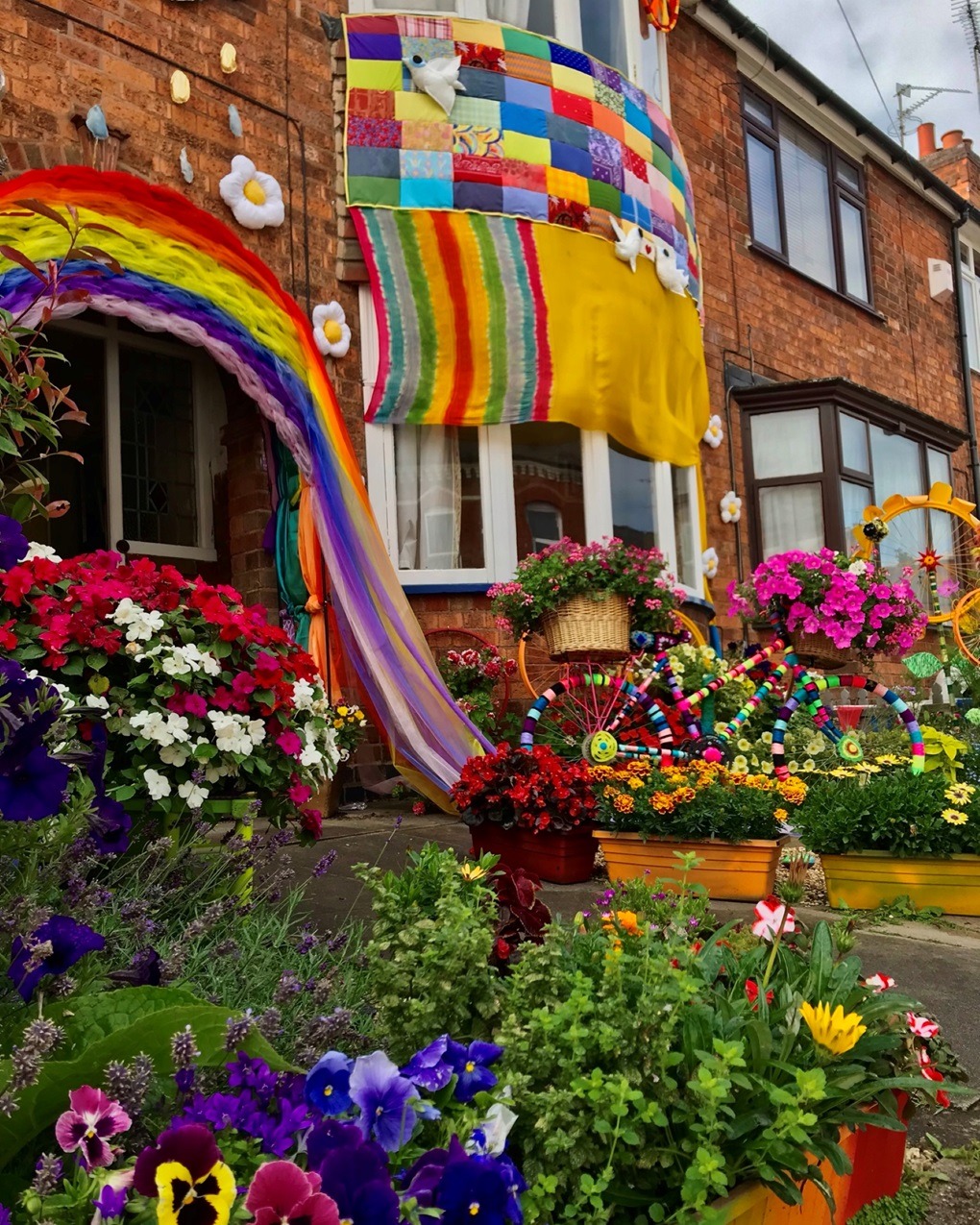
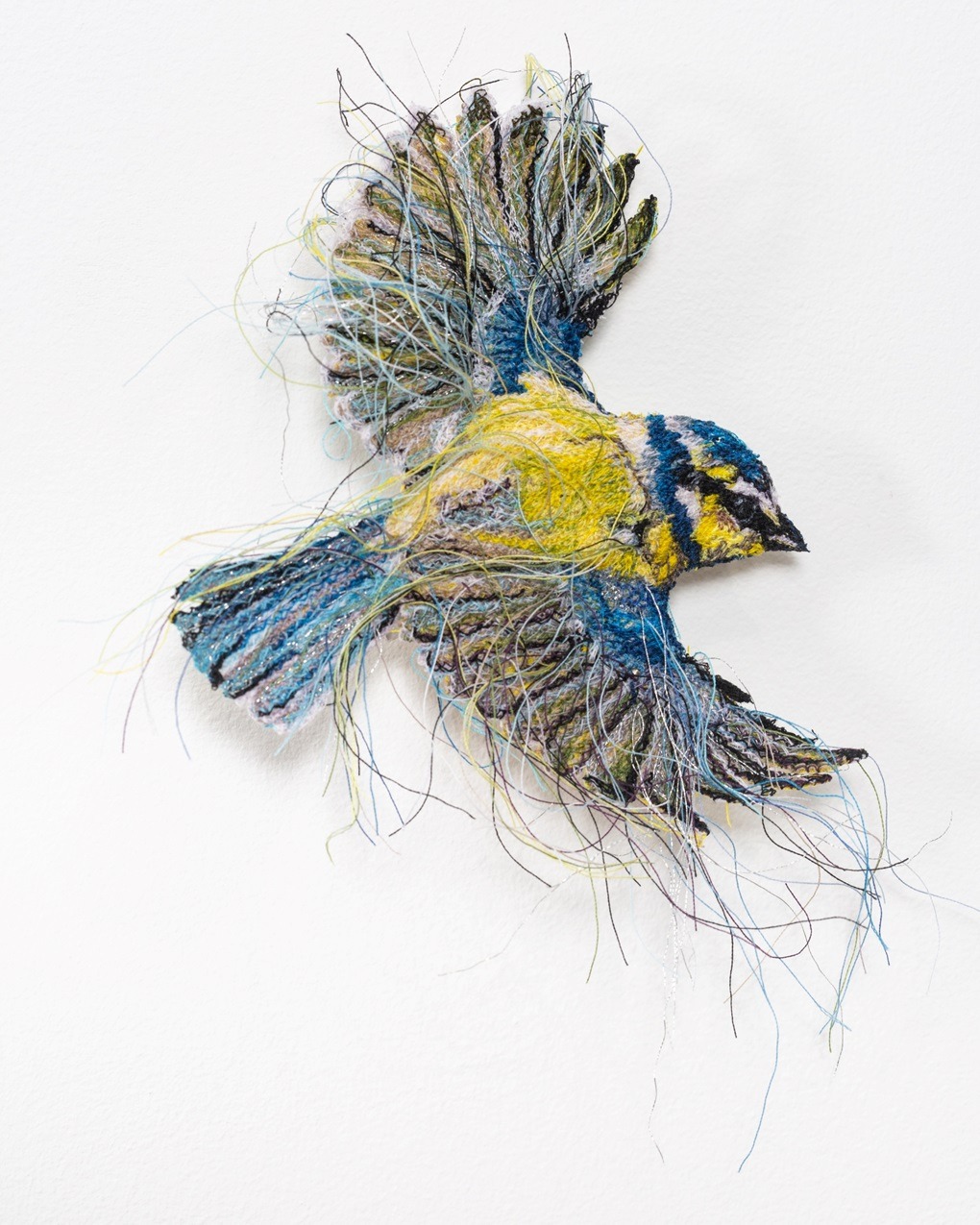
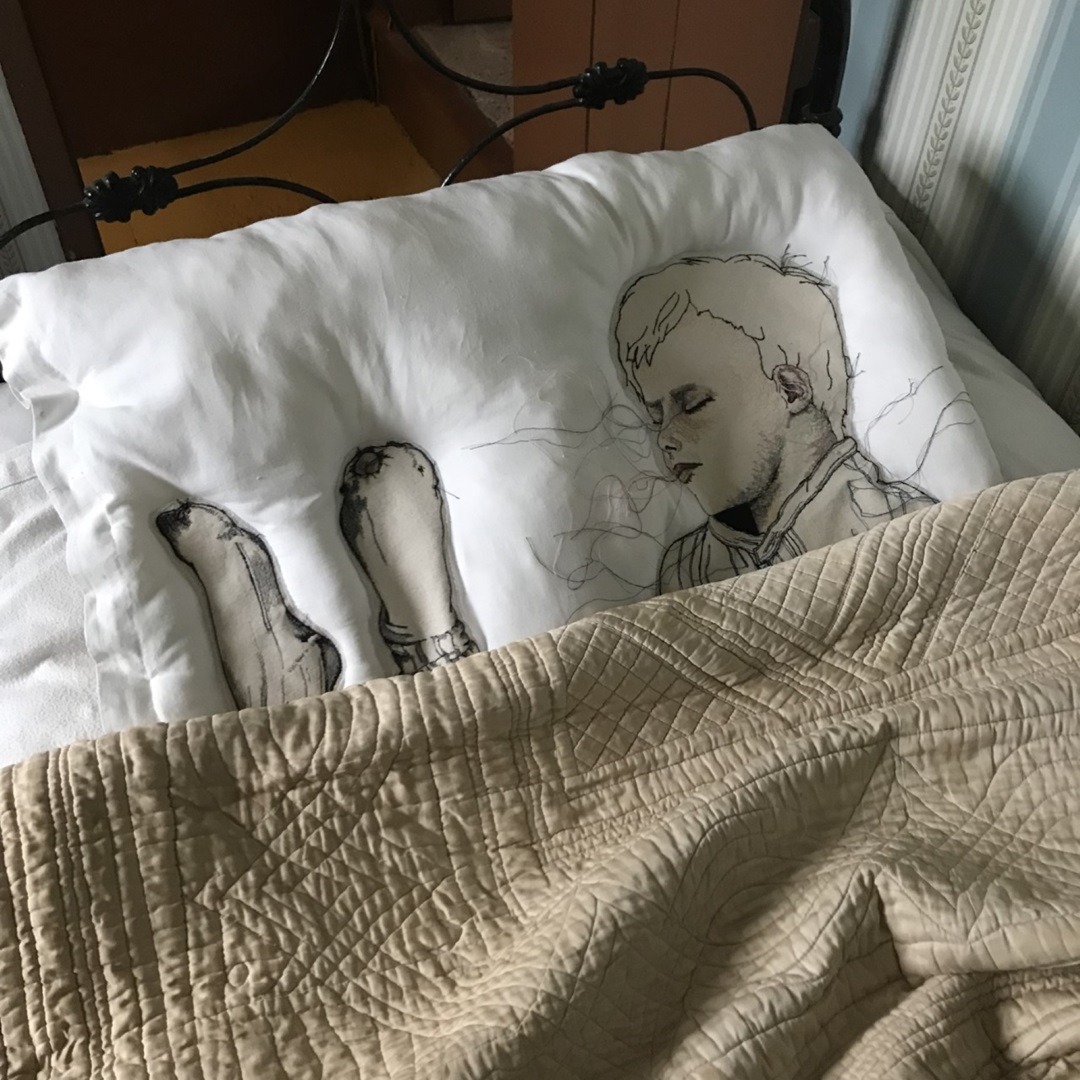
“I find most creating has some form of problem solving that drives me to despair, but the process can be quite satisfying once worked through.”
Planning
I have so many ideas running through my head and one of the joys of working on commissions, either public or private, is that it helps me think outside of the box in a way I might not have done if I hadn’t been working on that project.
I enjoy doing a lot of research on commissions to become as informed as I can be before deciding on a design. Generally, I don’t have a development process. I’ll have an idea and then start making it, working out any challenges as I go along.
I am lackadaisical with using sketchbooks. I sometimes use them – or scraps of paper – for brainstorming, or to record a word or line from a song or a book I’m reading. I occasionally make very badly drawn doodles or a collage of an idea which I’ll come back to. However, for the most part, I carry it all around in my head and will keep turning it over, or something will set-off an impulse of an idea strongly enough until eventually, I start making it.
Making
I use different methods to get my design together. I might draw with charcoal, pastels or pencils onto brown packing paper, before transferring the design onto fabric using different techniques.
Sometimes, if it’s a smaller work I will draw straight onto fabric. I often only need a simple drawing because, once I start sewing I work out the stitch and colour detail by eye as I go along.
Before starting a piece, I take the time to go through whatever materials and colours I’m considering using. I enjoy the process of sifting and sorting – I like deciding if something will work or whether I need to take another approach.
As I work with all types of materials, I usually have to stabilise the fabric in some way, such as with canvas, water-soluble stabiliser or interfacing.
As I’m making, I spend a lot of time carefully observing the image I’m working from. I often step back from the piece and take photos as this helps me if anything needs changing.
I work with various techniques such as free motion embroidery, standard hand and machine sewing, appliqué, basic patchwork, hand embroidery, tufting, basic weaving, felting, soft 3D sculpture, French knitting and acrylic painting. I’m mostly working out how to do things as I proceed.
“With free motion embroidery, sometimes less is more: less stitching and less density.
Working subtly can be more effective visually.
It also reduces the impact on the nature of the material I’m working on, so there are fewer problems to sort out.”
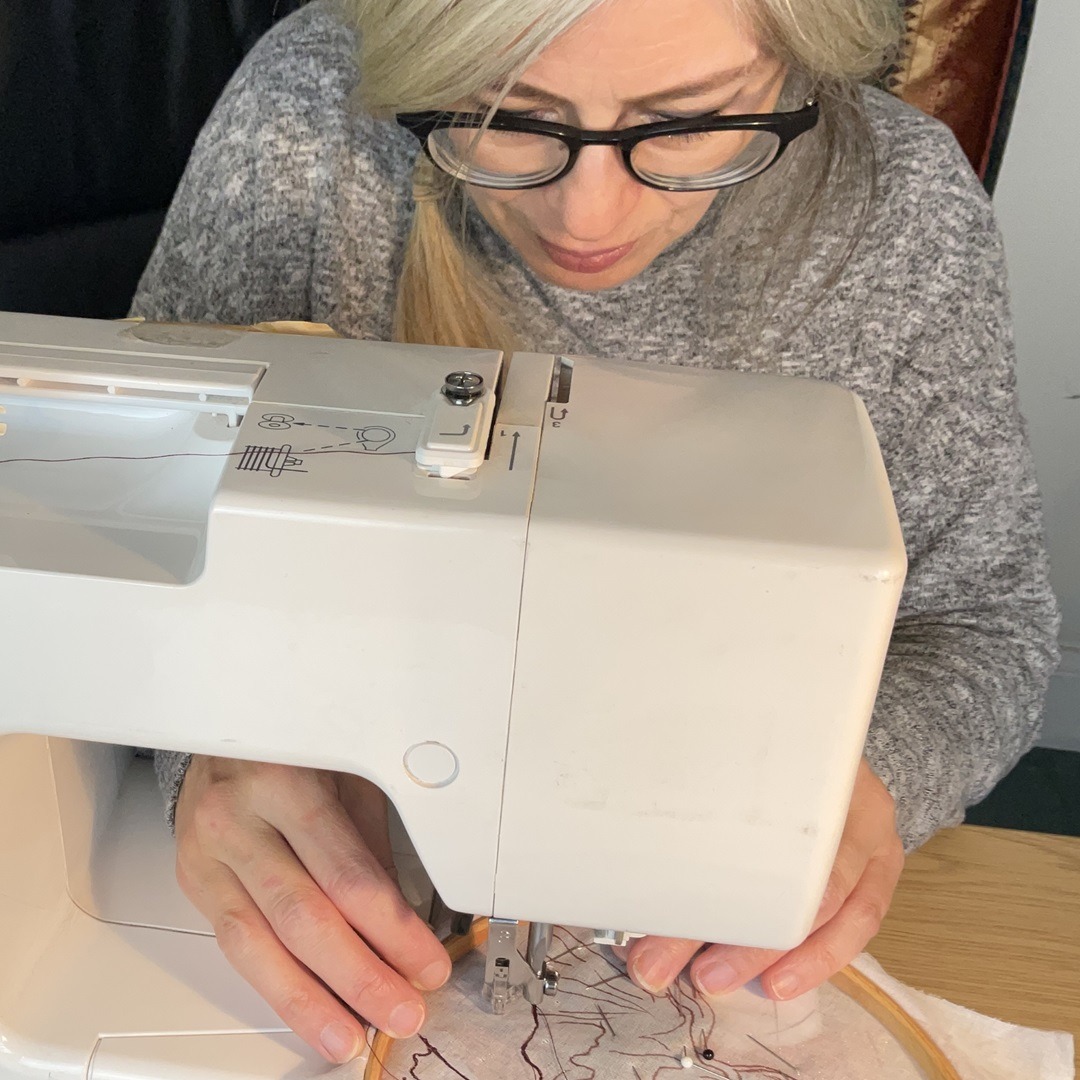
Persevering
A number of my pieces have been challenging but Little Connie stands out. It was a true labour of love to create, taking about a month to complete all the sewing. There was quite a long gap between starting and finishing it.
I had used a lot of yellow for the base colour, and the baby started to look like a jaundiced Mini-Me! The nose had to be redone three times. Unpicking the threads by hand was a nightmare as the denser the free motion stitches became, the harder they were to undo and the fabric below started to disintegrate.
“I set it aside for a month as I needed time to step back, to feel less frustrated and see it with fresh eyes.
It really helped to take some time away and create some other artworks – when I worked on it again I finished it quickly and without further issues.”
At that time I was a relative beginner to free motion embroidery so every new piece was a steep learning curve. There was an element of a happy accident in each one.
The sewn threads became so thickly layered on Little Connie it was impossible to use an embroidery hoop, so the piece started to attain a natural curvature. The dense sewing changes the structure of fabric.
I loved this element and worked with it further while sewing and in the finishing process. It adds to the three-dimensional presence of the baby.
Little Connie is a deeply sentimental creation of a family member, but it was also my totem that year. It opened doors and brought unexpected opportunities for me, including two awards.
I completed Little Connie in 2018 and as it has spent quite a lot of time being in exhibitions. Each time I’ve seen it afresh, I have had the strangest feeling.
I can remember making it – particularly all the frustrations I had – but there is also a disconnect, as though someone else made it.
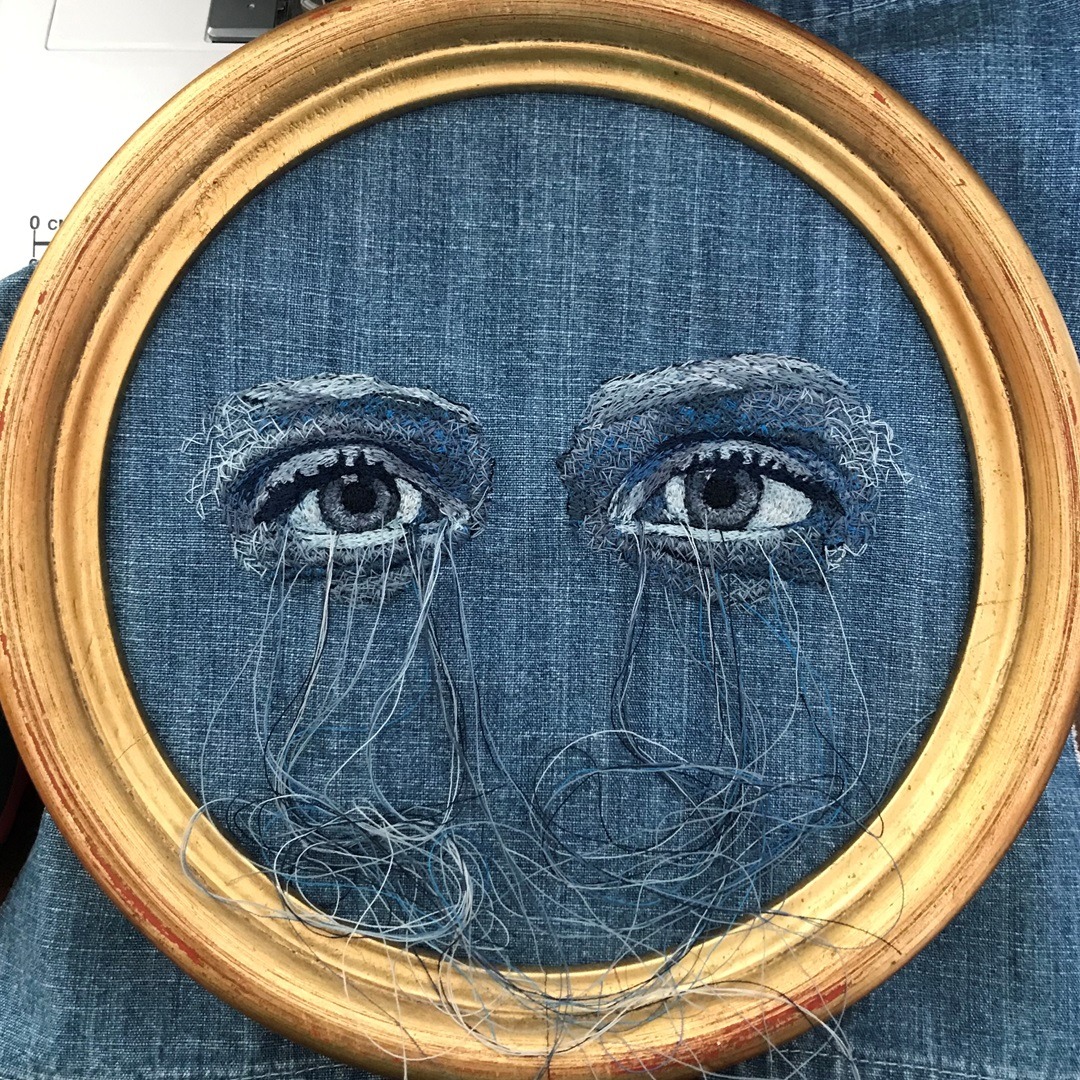
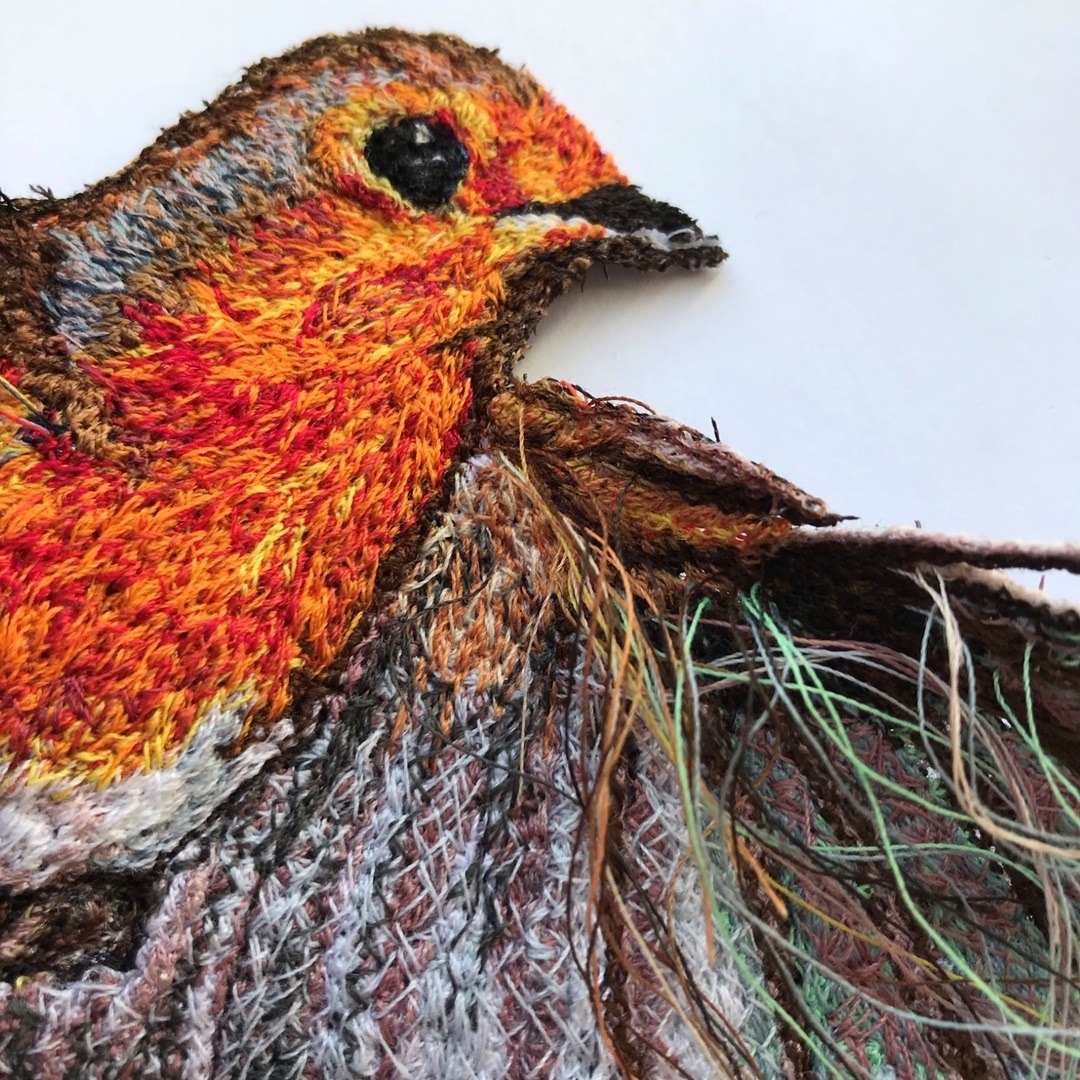
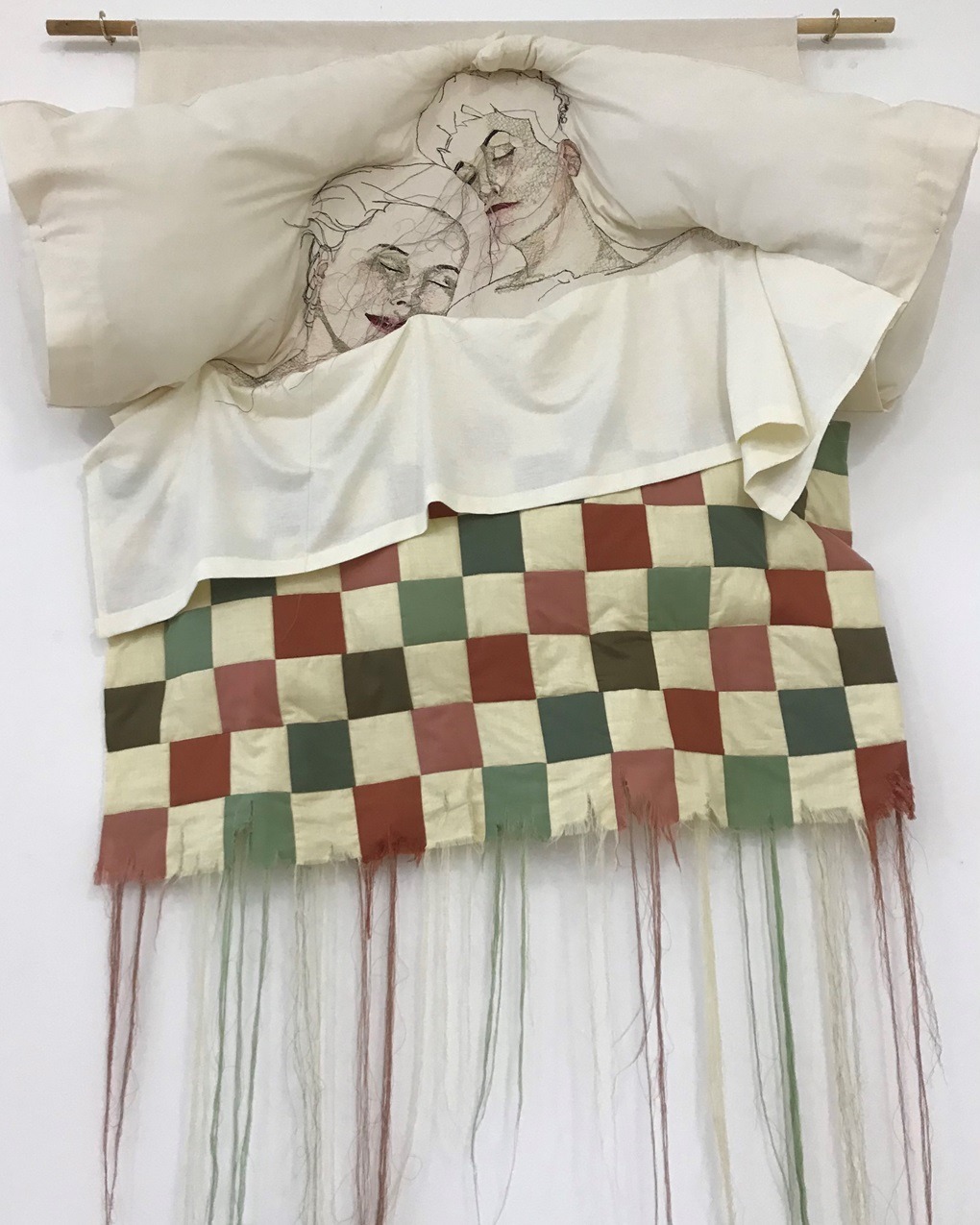
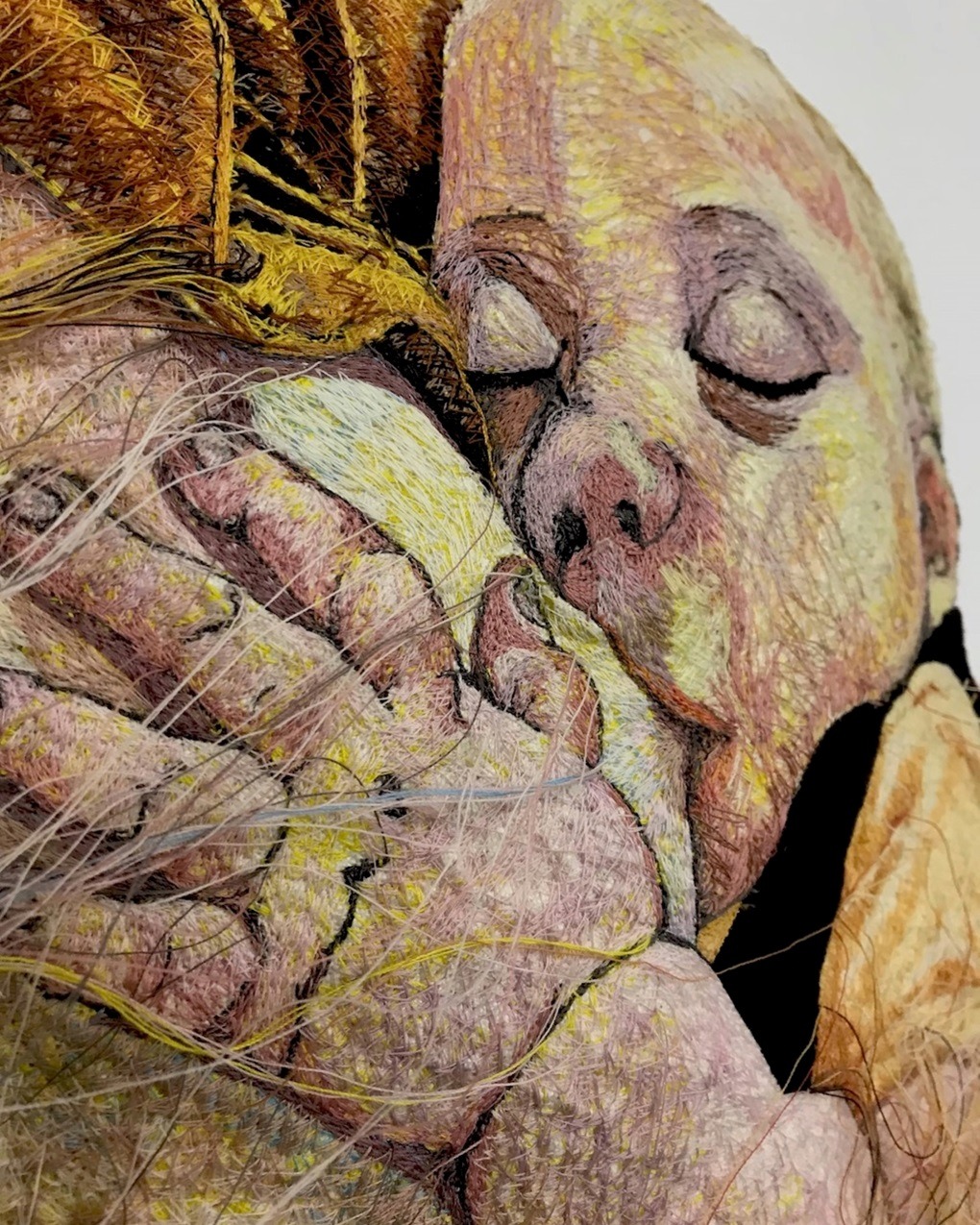
Experimenting
There are always some pieces that I feel happier with than others. A favourite is Kissed by Neon Lights because it was technically interesting to create and in a style I’d not used before. I work in collaboration with Aurifil as one of their Artisans.
I enjoy their challenges because, as with my commissions, I have to work to a brief, which makes me consider factors beyond the norm. For this project, Aurifil gave me three of their Tula Neon threads to try out and on this occasion, my brain went on a wild walk.
Neon made me think of the future and science fiction. Then I started to visualise a cross between the android character Rachael in the film Blade Runner and Miss Scarlett from the board game Cluedo (known as Clue in the US), both with their stylised hairstyles.
I remembered that the characters on the Cluedo playing cards look strangely elongated, like board game pieces.
One of my nieces is an actress and was very obliging in letting me use her as the model.
I wanted the neon threads to contrast against the subject so I considered what colour might do this. Vladimir Tretchikoff’s Chinese Girl with her blue skin was then thrown into the mix. So I settled on blue.
I used a wallpaper design as inspiration to create a neon pattern behind the portrait and used the brightest neon a bit like a halo around the figure.
“The neon really makes the portrait pop.”
Elements of the pink base fabric show under the blue of the skin. The blue is stark against the neon, and the red lips and the texture of the stitch contrast with the flatness of the appliqué.
I love how the work can look three-dimensional and flat at the same time, depending on the angle it’s viewed from.
By the time I made this piece, my embroidery technique had improved. I discovered better ways of dealing with issues such as warping.
It was a joyous and fun piece to create, and it currently sits on my studio desk waiting to be framed – I’ve not quite decided what is best for it yet. It makes me smile whenever I see it.
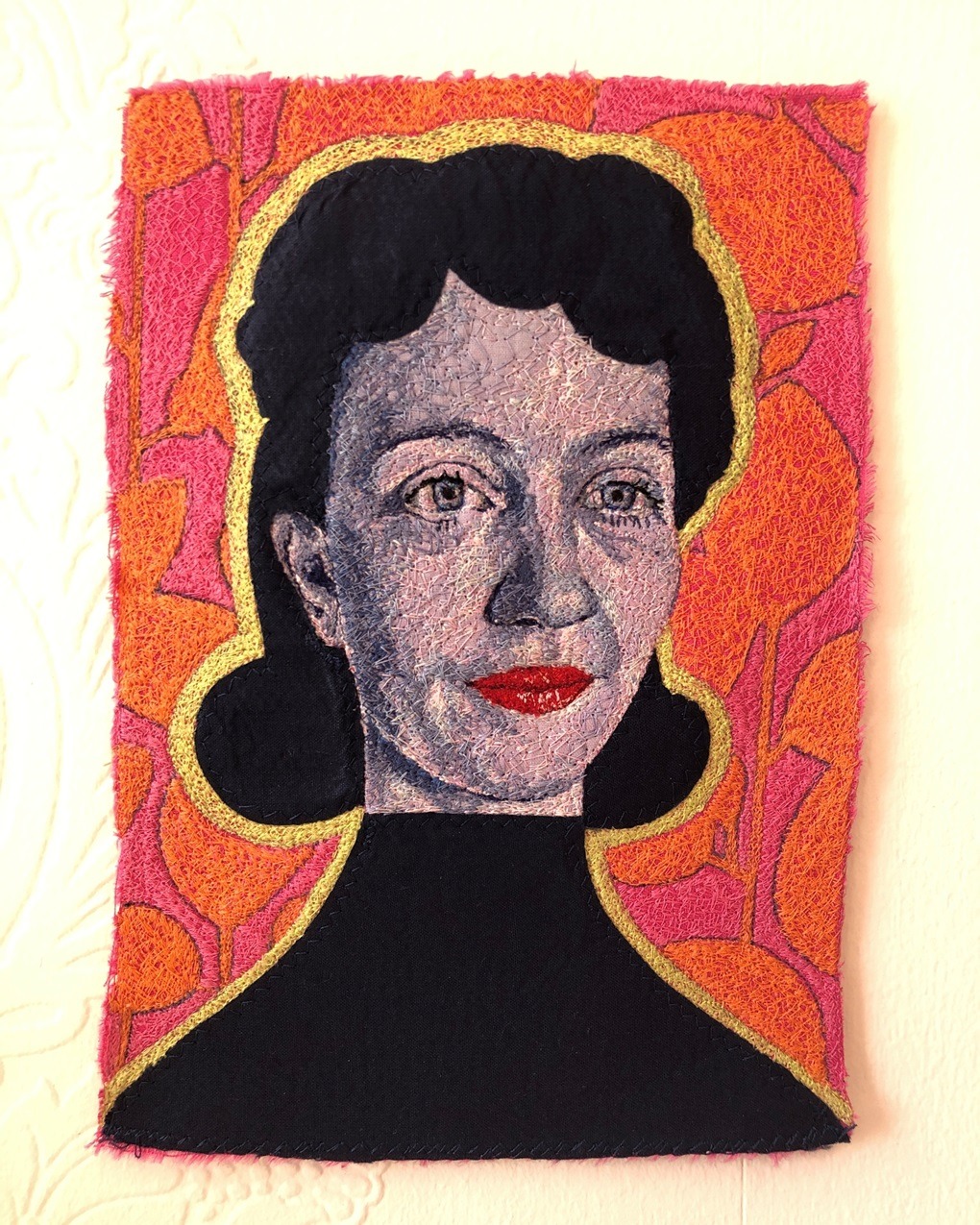
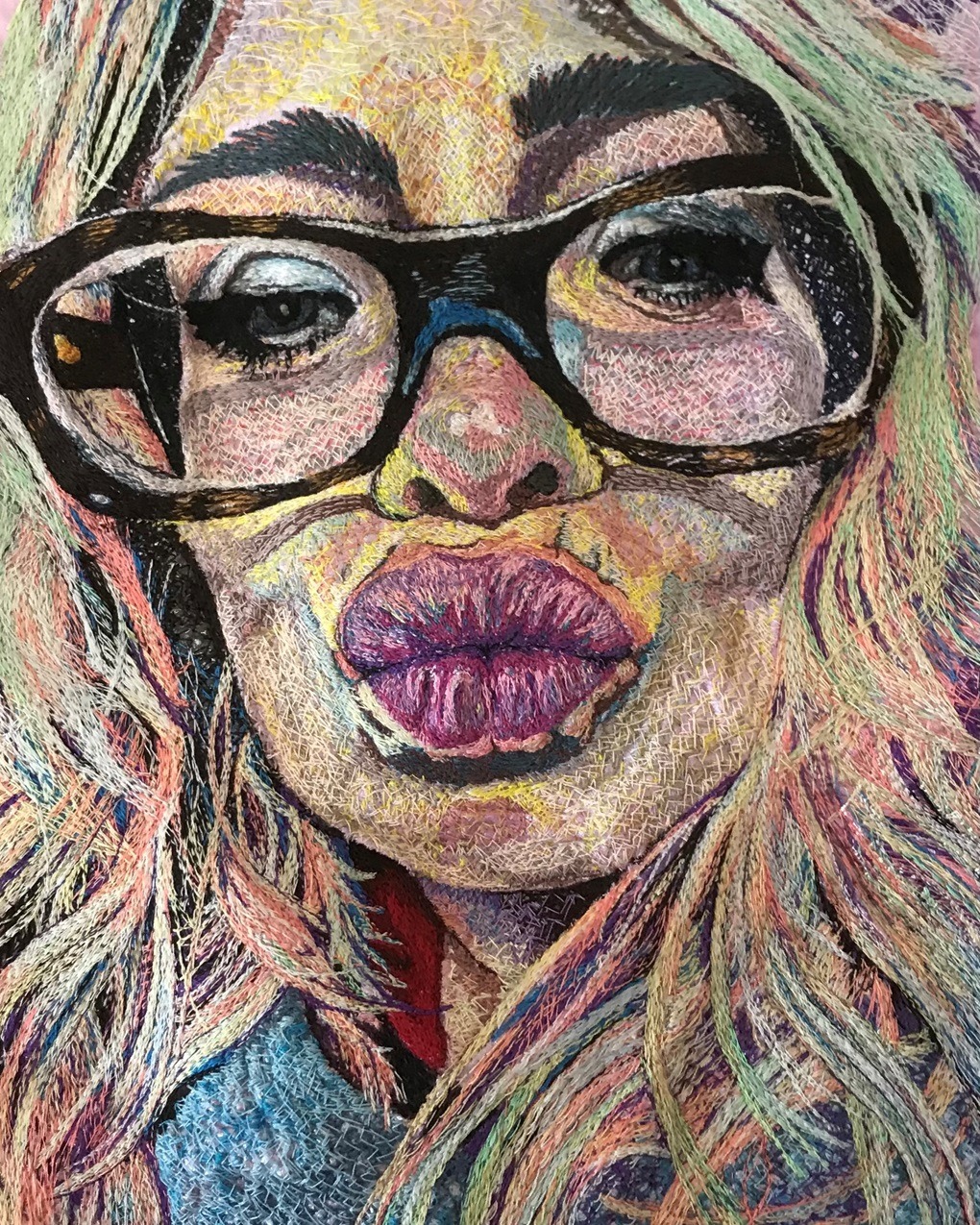
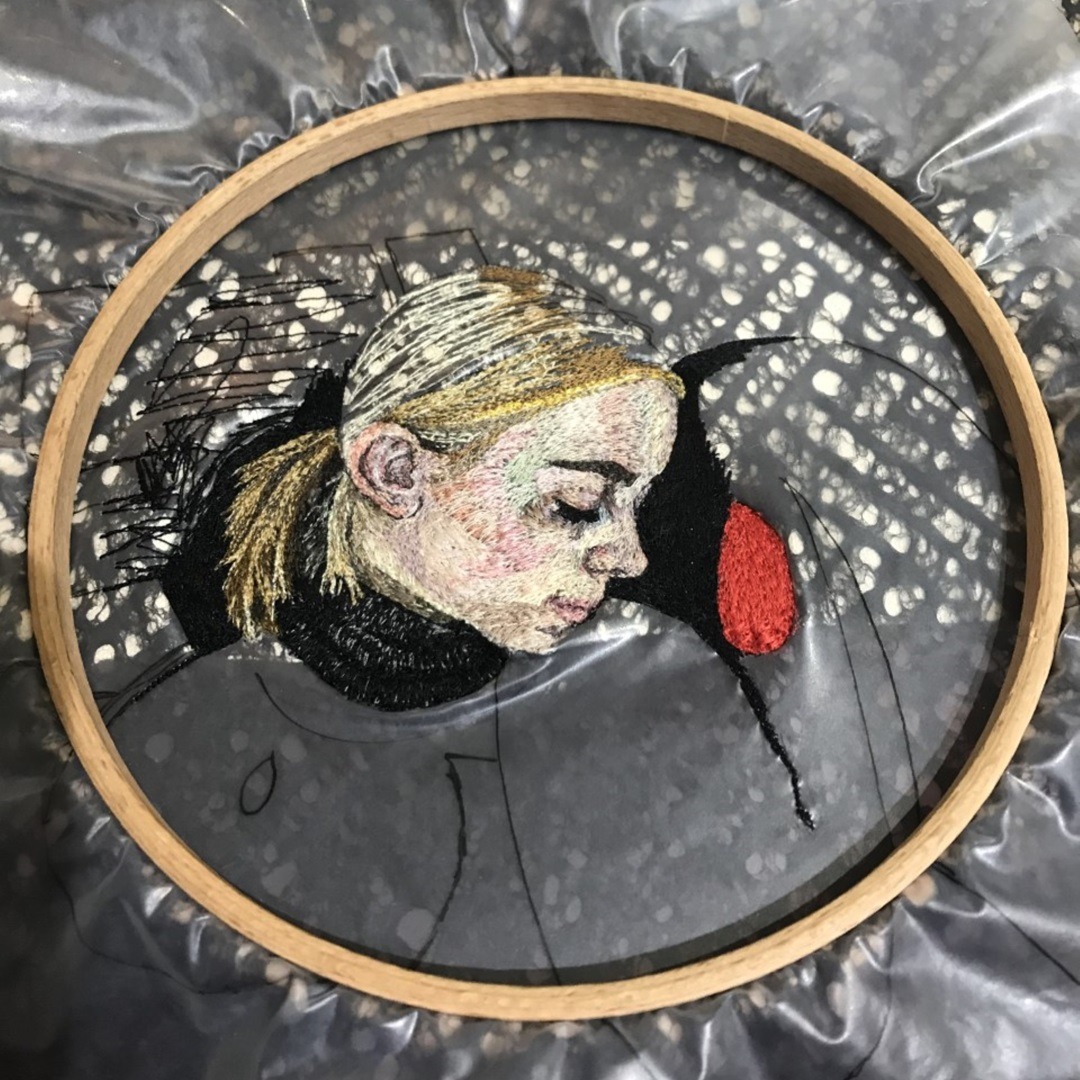
Focusing
My first residency was at StudionAme in Leicester. I was made redundant in 2016 and decided to work part-time for a while. I started to paint and do photography again and wanted to feel more involved in the local art scene, so I applied for a job working in an independent cinema and arts centre.
I was also looking for art events to attend. I spotted a Facebook post about the residency and applied, writing about a project I wanted to do and why. A short time later, I was asked for examples of my work.
I had virtually no work to show and so I did lots of drawing for the deadline a week later. I was over the moon to be selected after an interview.
The residency began in January 2018. I had free studio space for six months, critical support, a stipend for materials and a solo show at the end of it. It was a particularly bad winter and there was even snow in the studio.
However, despite being absolutely freezing, it was a wonderful experience to be given the time and space to be creative in any way I wanted.
As well as guidance and support from the studio directors, Yuka Namekawa and Steven Allbutt, the other artists working at the studio were also incredibly generous with their time, energy and advice. It was a lovely, nurturing environment for someone just starting out.
“During this time, I made very personal pieces that I am still proud of.
I developed my style of free motion embroidery and it gave me the chance to network with many people, which led to further opportunities.”
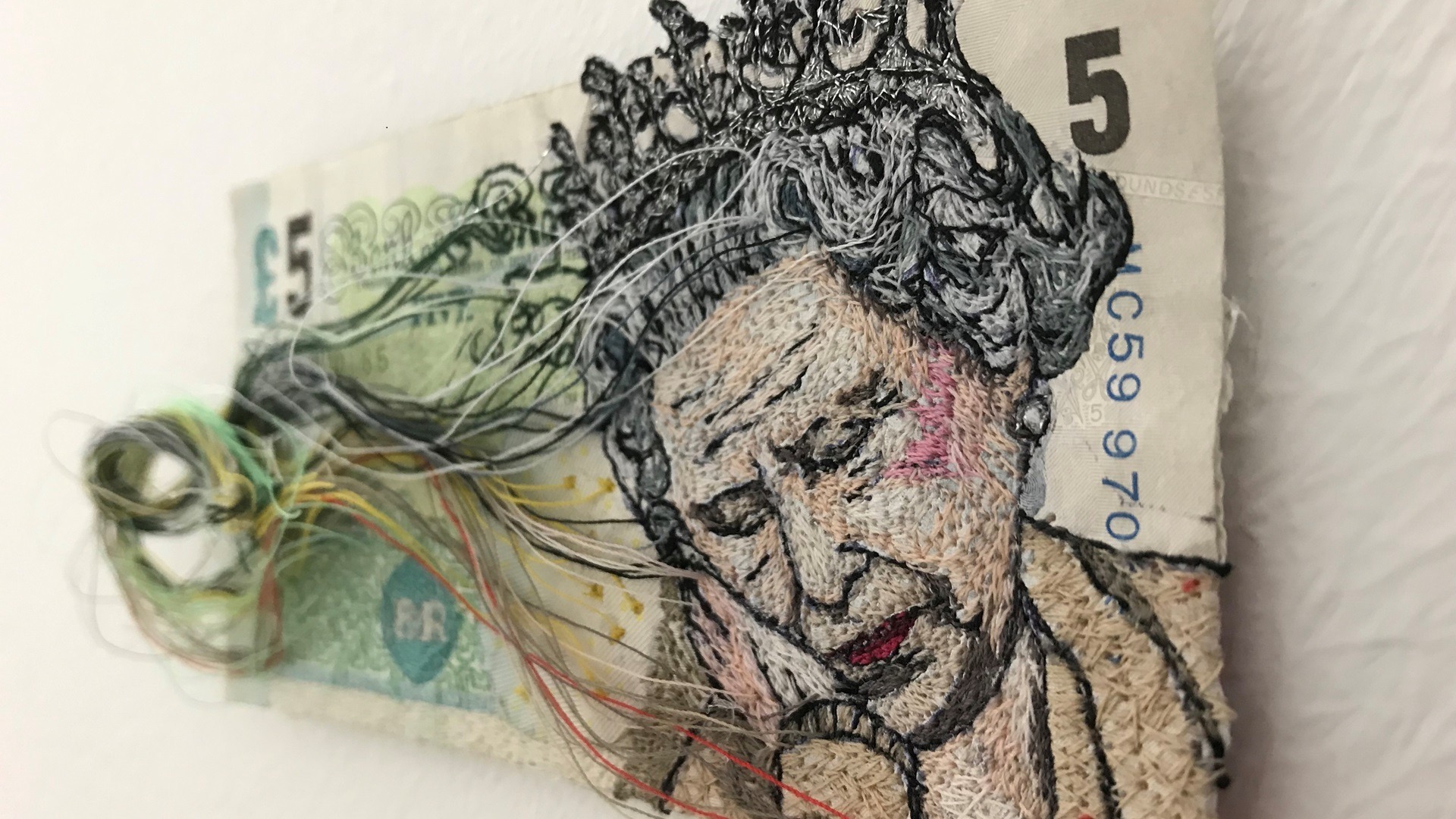
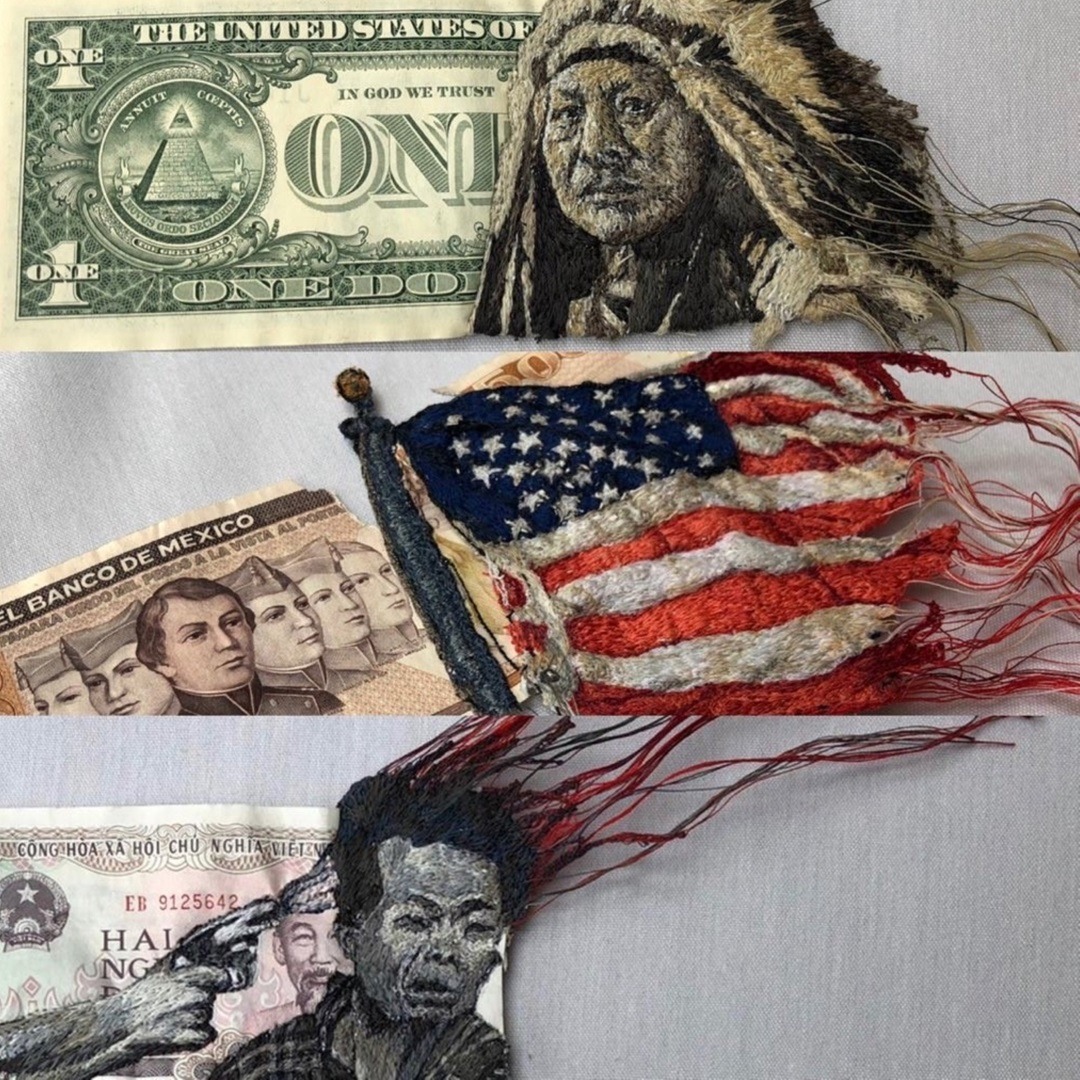
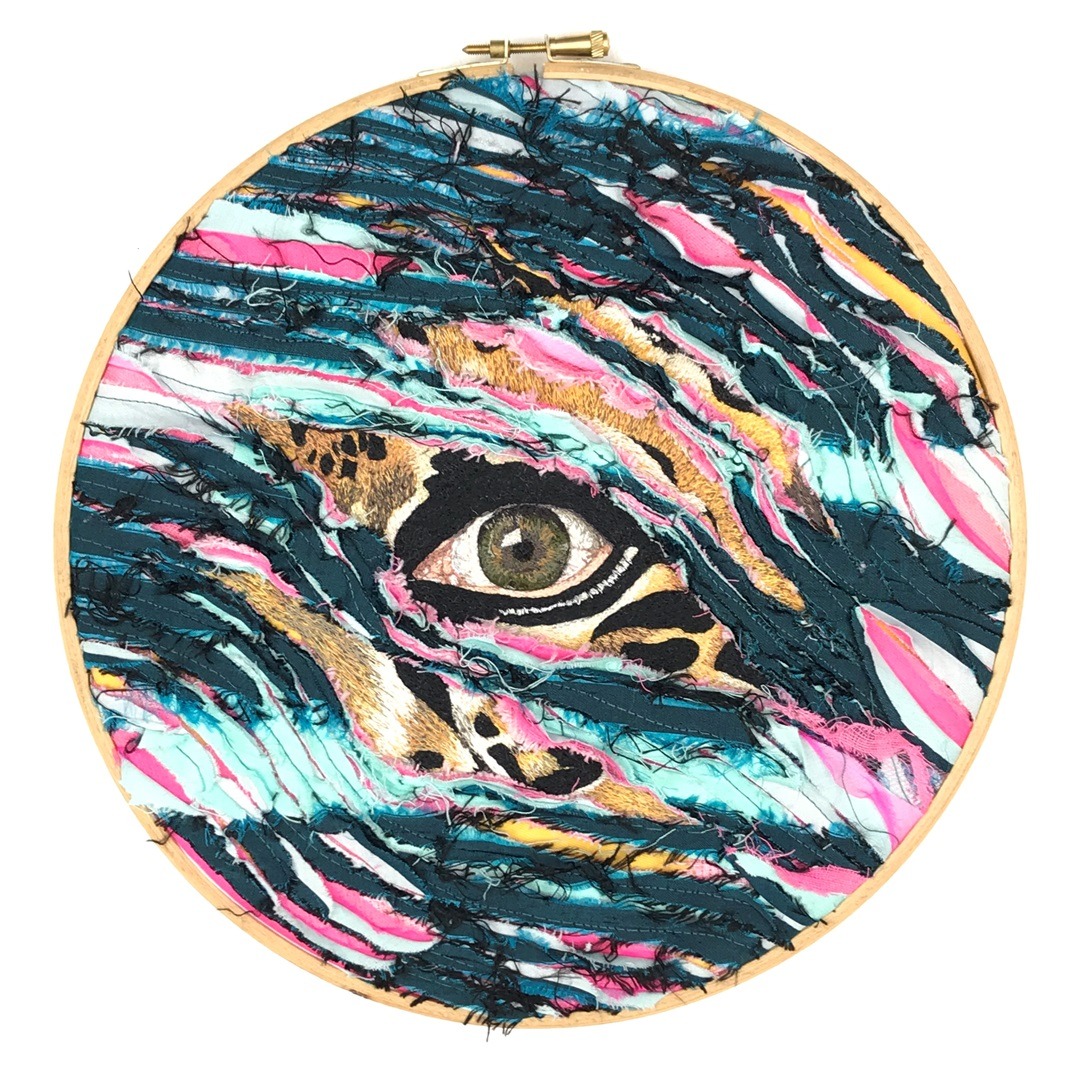
Travelling
My work at StudionAme led to a two-month stay in Tokyo, at 3331 Arts Chiyoda, an arts centre and studio (now closed). I’d wanted to visit Japan since I was 14 years old when I was given an antique dressing gown by my sister that had been my great grandmother’s.
It was a silk patterned kimono-style gown, which would have been bought at the height of the Japonisme trend. Since I was a teenager, I’ve been hugely inspired by artists such as Klimt, Bonnard and Van Gogh, who were also influenced by Japanese art and design.
At StudionAme, I knew exactly what I wanted to work on as soon as I started the residency. But in Tokyo, although I had researched thoroughly and planned to follow particular interests, concepts and cultural experiences on arrival, I had not really factored in how certain elements of a residency abroad would affect me.
I had jet lag. I had to learn to navigate the city and cope with a new culture, language and different foods, all while living with strangers from other countries.
“I started to explore straight away, seeing and experiencing amazing things.
I felt a slight sense of panic that I wasn’t sure how I would fit everything into my art practice.”
Although I was gathering and absorbing inspirational material on a daily basis, it did take time before I knew what to do with all this information.
There is so much to experience in Tokyo alone. Certain events and trips really stand out, filled with moments of adventure, joy, breath-taking beauty and plain bizarre. Local festivals gave me some of my favourite moments.
The sound of school band parades; small children holding hands singing; people dressed up in traditional costumes, some playing folk instruments with flutes, bells, pieces of wood and drums – some of the music lively and some meditative, but all with an almost hypnotic energy.
There was an explosion of colour and pattern in the exquisite costumes. The definitive element of these festivals, however, was the sense of community in such a massive city.
The few trips I made out of the city were also some of my favourite days. Kamakura and Enoshima are two of many beautiful places that run along the Enoden electric railway line, where the train is essentially like the little train from the Studio Ghibli film Spirited Away.
There is an abundance of cherry blossoms, shrines and temples, walks in the hills and views of the sea. I visited the area twice and still didn’t manage to see everything.
It was all wonderful but particular places, such as Hasedera Temple in Hase, stood out. It’s built into the side of a hill, with stone steps and cute Jizo stone figures that protect children in the afterlife, as well as hundreds of other stone statues in all sizes.
There were waterfalls, ponds full of Koi carp, multitudes of flowers, forests of greenery, amazing views and caves to explore – all added to the feeling of being somewhere otherworldly. Getting to Enoshima on the first trip, just as the sun was setting over Mount Fuji was magical and moving. I watched it until the last bit of sunlight had disappeared.
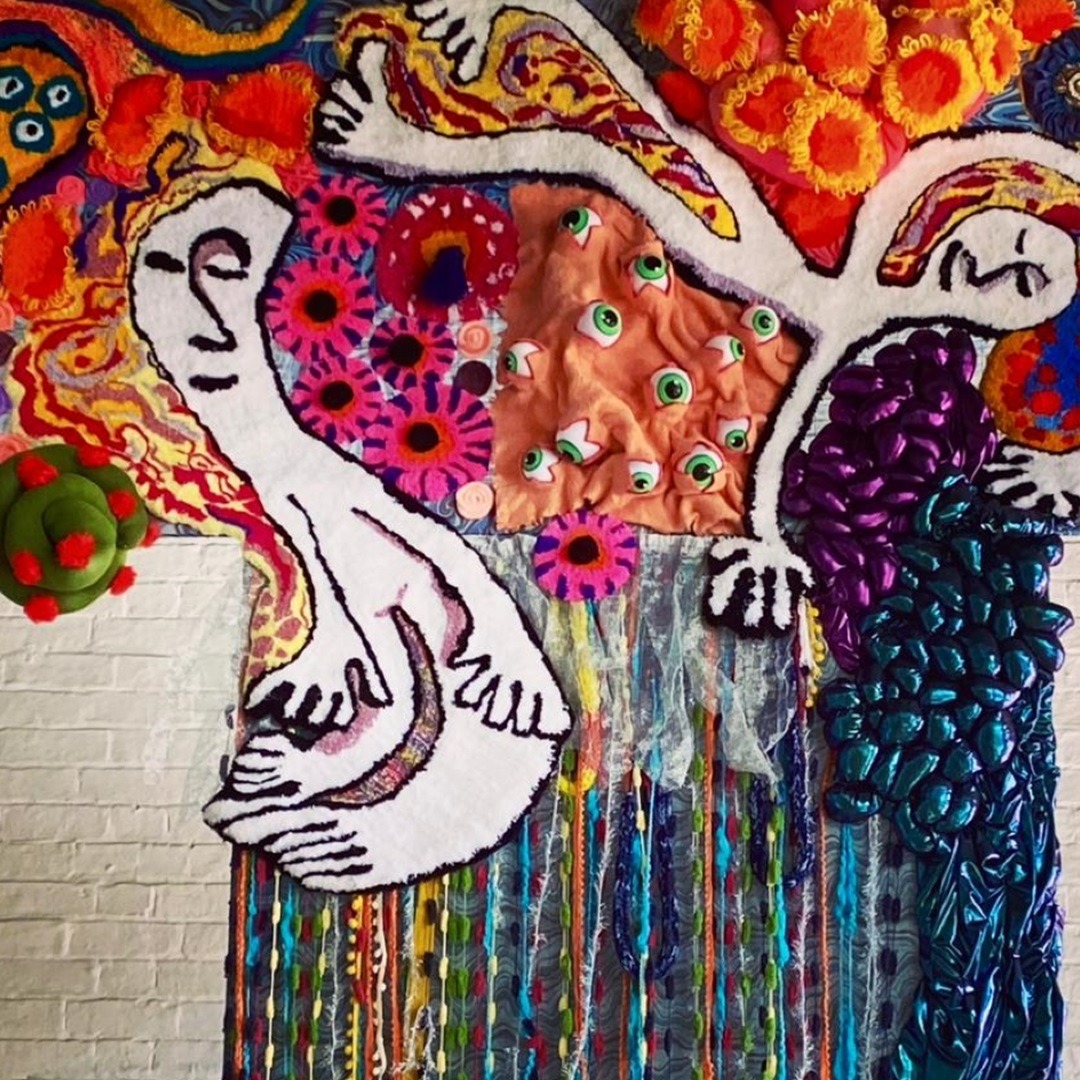
Collecting ephemera
As well as constantly taking photographs, I picked up lots of ephemera on my trips out. I collected what others might see as rubbish, to use as a visual resource and incorporate into mixed media work, for collage in my sketchbook and for my textile pieces.
“My aim was to create multi-layered imagery that I would work over with free motion embroidery.”
I enjoyed hunting for resources to use in my work at the flea market held at the Ohi Racecourse, just a ride away on the monorail.
I purchased vintage kimono, obis and haori (a man’s garment) for about a pound each, plus old maps and postcards and kitsch ornaments. I also had the chance to learn a little sashiko, a traditional hand sewing technique meaning ‘little stabs’.
Near the end of my visit, I was able to try SAORI freestyle hand weaving, using a small loom with no rules and restrictions. Unlike traditional hand weaving, where weavers value the regularity and cleanness of the woven cloth, in SAORI more importance is placed on free expression. Irregularities are embraced and become a celebration of individuality.
I have a wealth of material from my time in Tokyo, which I am still working with and I hope will become part of new work in the future.
Growing
I discovered a lot about myself personally and professionally while away. Living with artists from other cultures was stimulating. I enjoyed the artistic dialogue and sharing of perspectives. It helped to have the camaraderie of others who were having similar experiences.
Although I met and got to know different people, essentially you are on your own – pushed out of your comfort zone, often exploring by yourself and experiencing a sense of alienation because of cultural and language differences.
It was a case of Me, Myself and I, and there was no escape from that. It was an emotional experience, cathartic, but also very liberating.
The residency was extremely rewarding. I was able to give full attention to my creative practice, with none of the normal everyday distractions. I was able to take risks, explore, experiment and conceive new projects.
It created other opportunities, some of them unexpected, including presenting my work to new audiences through exhibitions, talks, teaching, networking and writing, which helped to raise my profile.
Additionally, it focused my thoughts on professional development and how I could progress in creating a sustainable art career on my return to the UK.
As an artist, you need to build resilience. If there is an area you feel is lacking, such as self-esteem, motivation, organisation, networking, then find ways to work on it, to help you move forward professionally and creatively.
I’m naturally quite shy and I struggle with all of the above, but I keep exploring ways I can improve, for example through reading, mentoring, training and online videos.
“I force myself to face issues and go for the things I’m interested in. It can be slow, but it does start to pay off.”
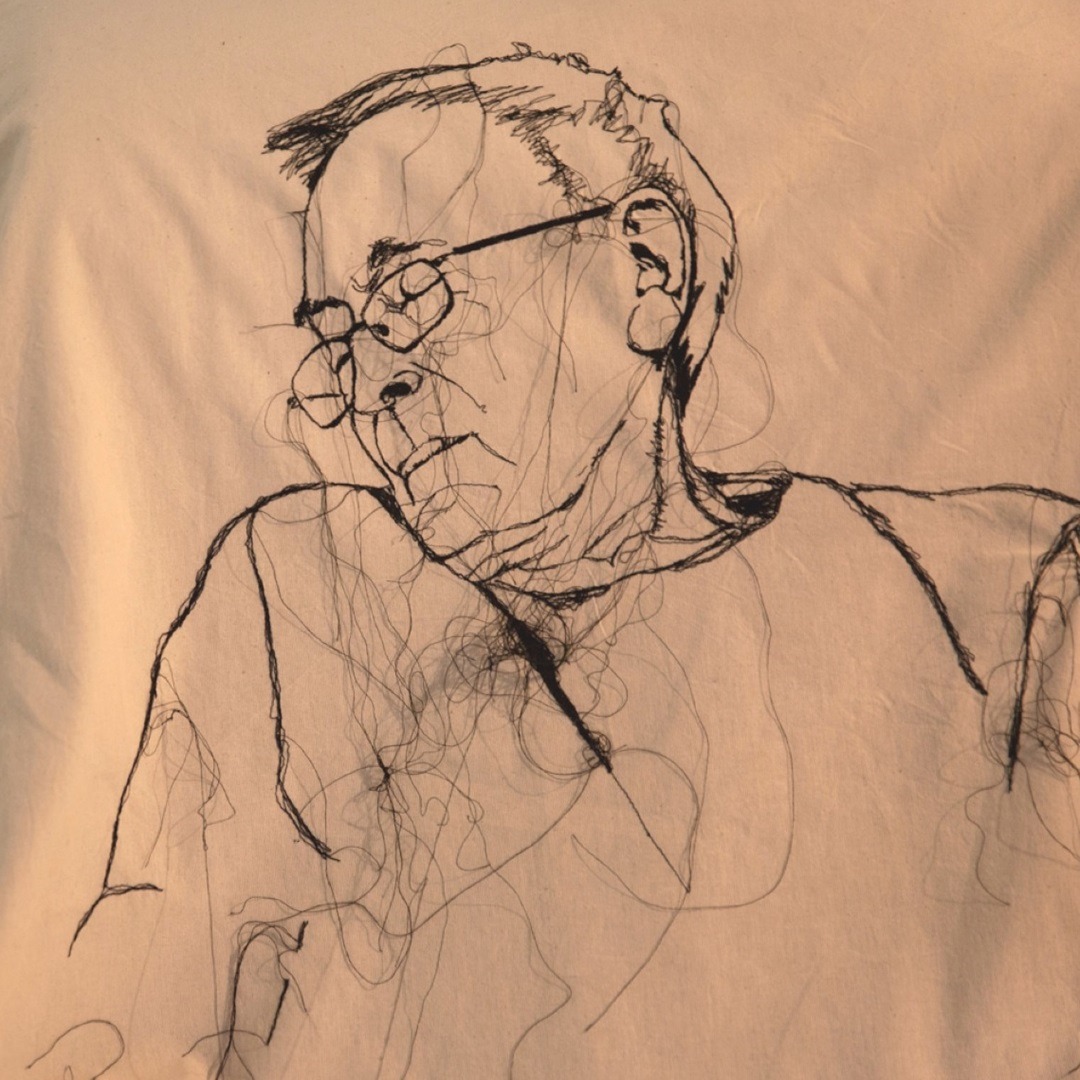
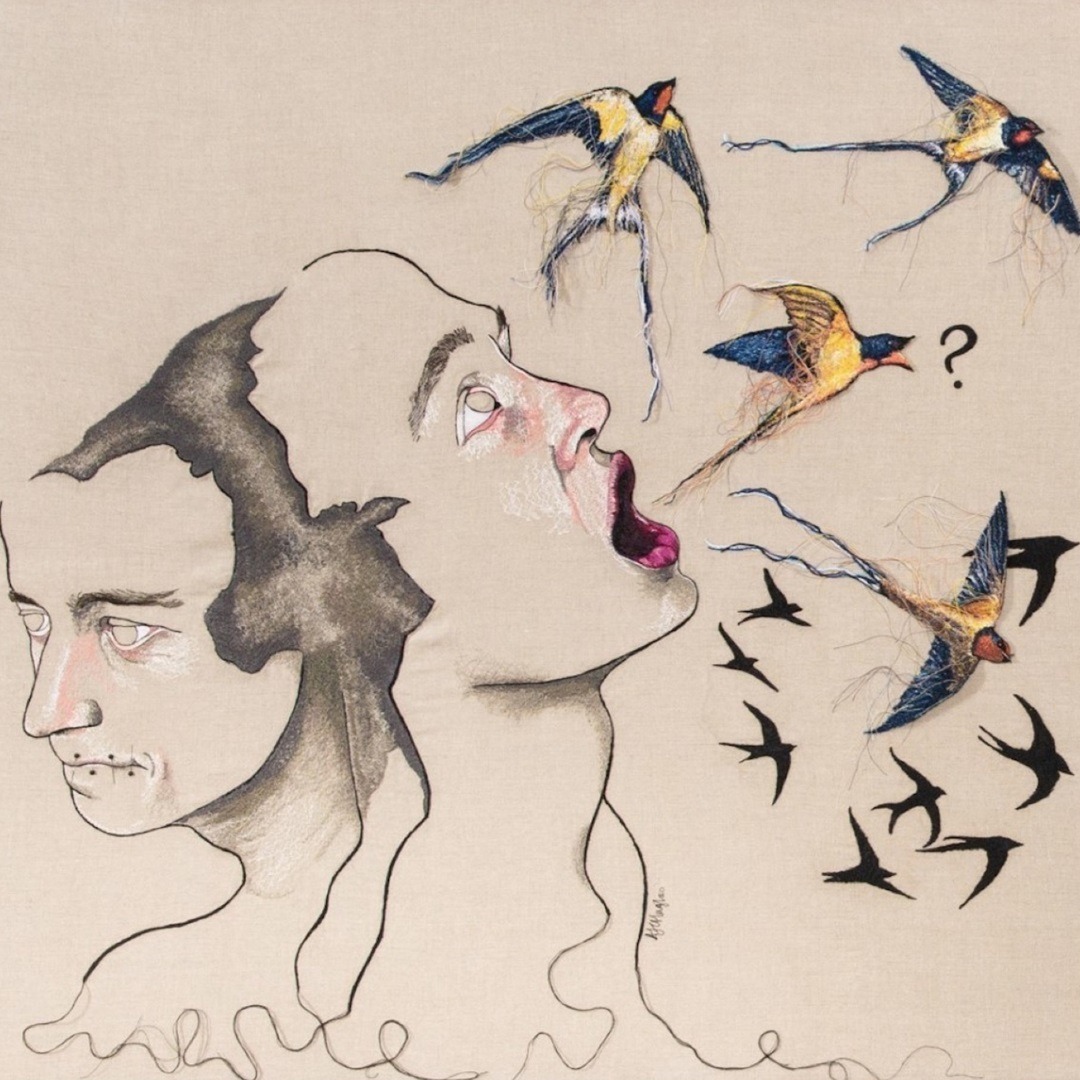
Early influences
I loved creating from an early age. When I was small my mum gave me a drawer in the kitchen that brimmed with pens, pencils and the computer paper ends my dad brought home from work.
She kept the wallpaper collage cards I made at school and came to all my events up until she passed. My mum was my champion in so many ways.
Both my parents were avid readers and my dad wrote me poems and stories. They took me to museums, historic buildings and galleries.
I come from an absolutely huge sprawling family that loved to socialise and dance, so I feel these elements all add to a rich mix influencing my imagination and love of words.
“My direct family also has a strong interest in a spiritual, non-material and alternative side of life, which has definitely shaped my view of the world and leaning towards symbolism.”
A slow burn
I completed my Fine Art degree in the 1990s but I married and had a child soon after graduating so my main focus became raising my son.
I have had a varied career path, working in other areas until I decided to become a full-time artist in 2021. I have participated in exchanges living abroad in the US and Canada, as a student and when my son was small.
I didn’t do anything with my creative practice for a long time. In 2016, I took a weekly two-hour creative textiles course and asked the teacher if she could show me how to do free motion embroidery. It was a big, busy class, so she got me started but I have been self-taught since.
I didn’t really do much with it until the beginning of 2018 when I won the residency at StudionAme and started to create partial portraits in stitch, which the directors of the studio encouraged me to take further.
I’ve learnt other textile techniques since, mostly through self-exploration, apart from tufting, which I did a day course in.
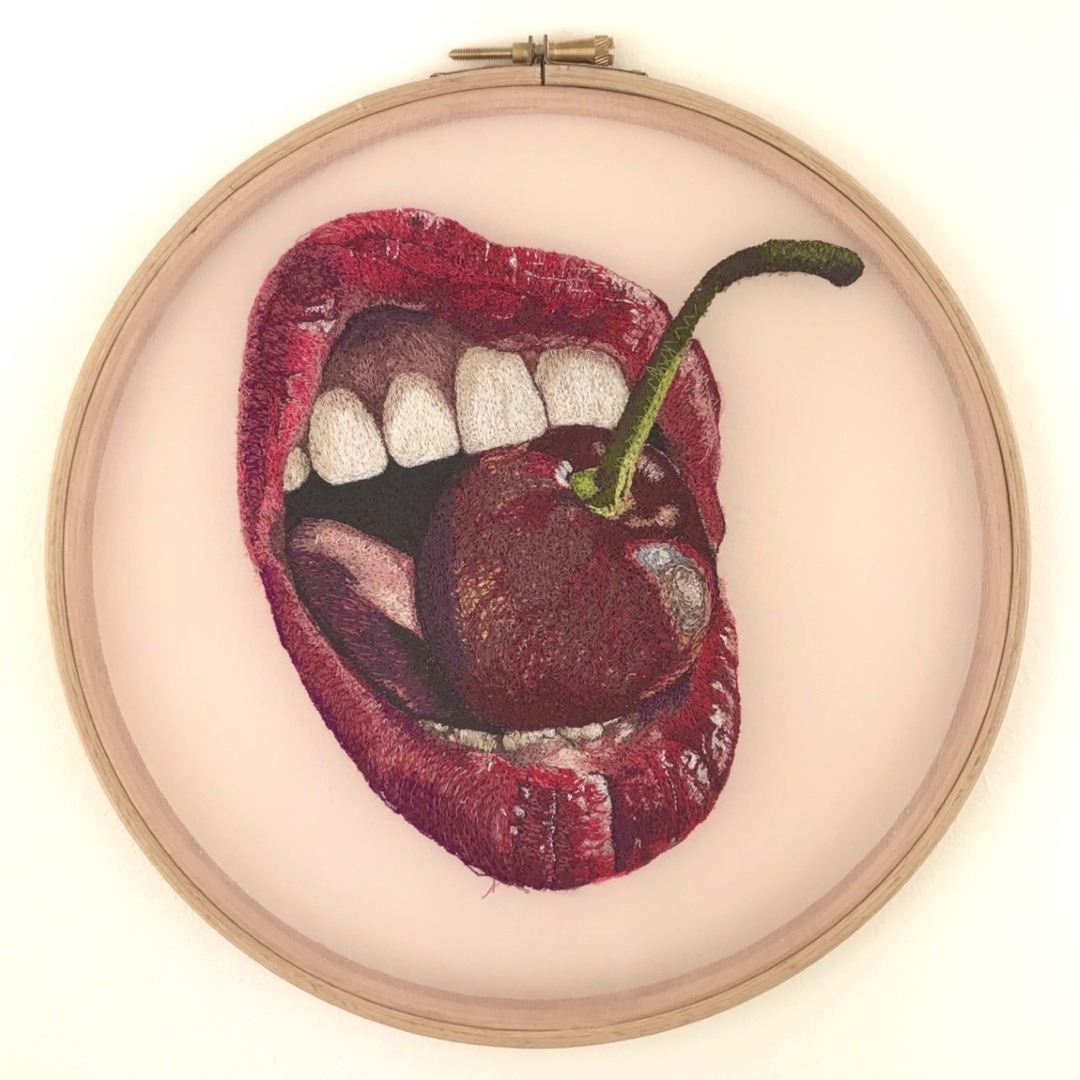
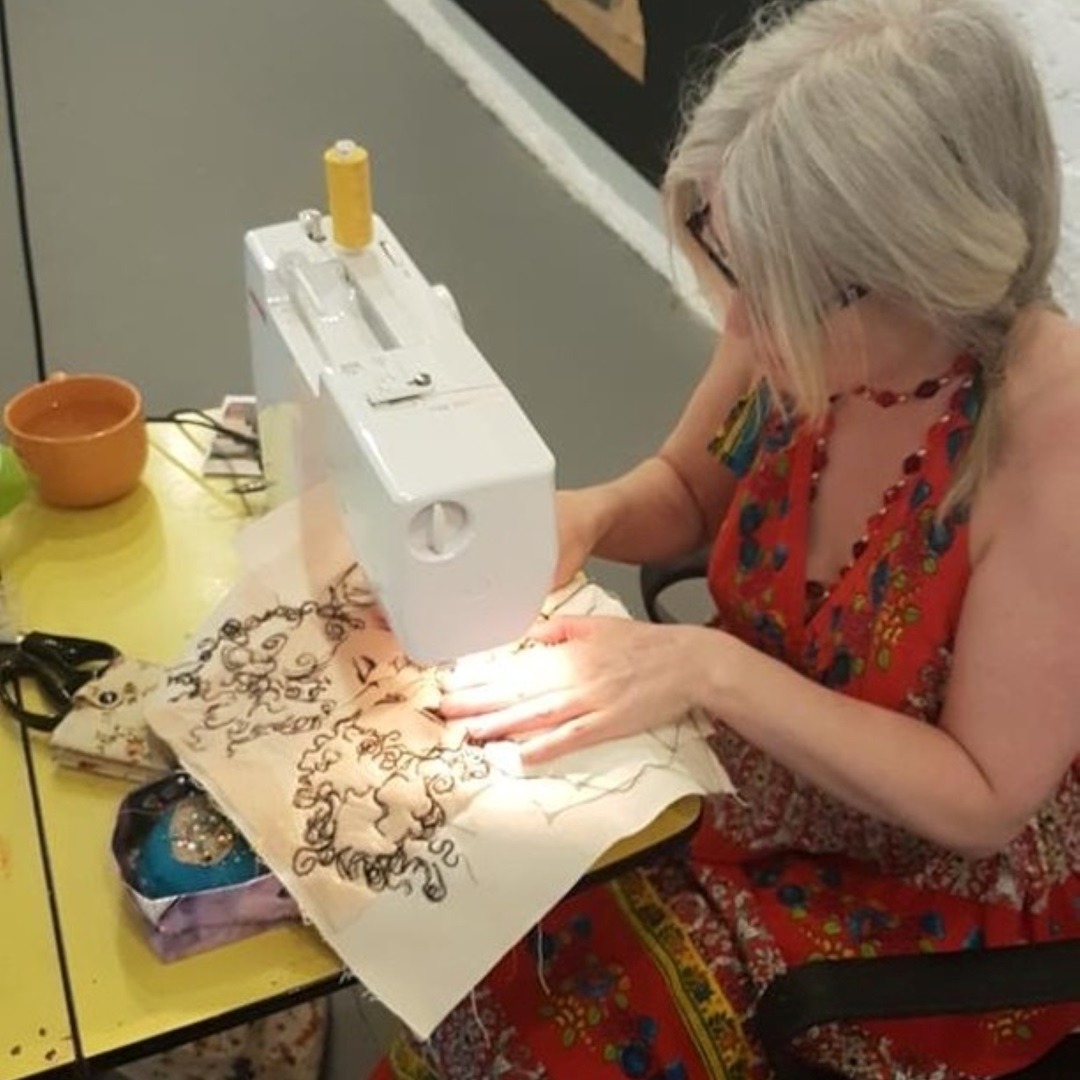
“Try to follow what feels right to you but realise how much you can learn from others.”
My advice
It’s really helpful to learn business and marketing skills. A freelance artist needs to be able to juggle many different aspects along with the creative side.
Plan ahead and strategise – I’m still working on this one. If you want to be consistent with time, energy and finance, forward planning is so important.
Where do you want to be heading? What do you want to be doing? What do you want to be making? Who do you want to collaborate with?
Keep looking forward and give yourself time to plan future projects while you are working on a current project.
“You have to create your own opportunities and events.
Don’t sit around waiting for others to do something.
Do it yourself.”
It’s a huge learning curve; it can be massively challenging and it might not always work. But it can also help you get out there, meet people, open up possibilities of new projects and create something of worth, not just for you, but for other people too.
Co-founding and organising the Textiles Takeover events and the Leicester Textiles Festival have opened up creative and work opportunities for lots of individuals and have brought together people in the community, allowing them to see creativity in a new way.
Exploring
Because I focus on materials and process, I feel my work is continually evolving. Although a lot of my work is created through free motion embroidery, as with subject matter, I hate being pinned down to just one technique.
I want to give myself the freedom to explore different textile techniques, such as tufting. One day I might go back to drawing and painting. I’m still learning a lot with free motion though, particularly using new materials and improving my technique.
With big projects, such as the textiles festival or working on community projects, I get to exercise another side of myself, including the organising and event planning.
“As a freelance artist, one can get caught up in the mechanics of making a living, so I’ve made a resolution to reverse a little.
I want to rediscover the connection and freedom I found in my work during my residencies, to create a new body of work.”
I’m looking forward to working on more personal pieces that have been brewing in my head the last few years. These will explore different elements of myself and will cover aspects of relationships, female sensuality, ageing, grief and mental health.
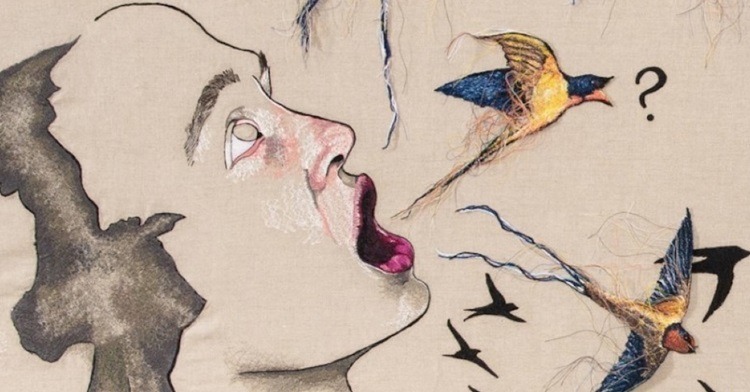

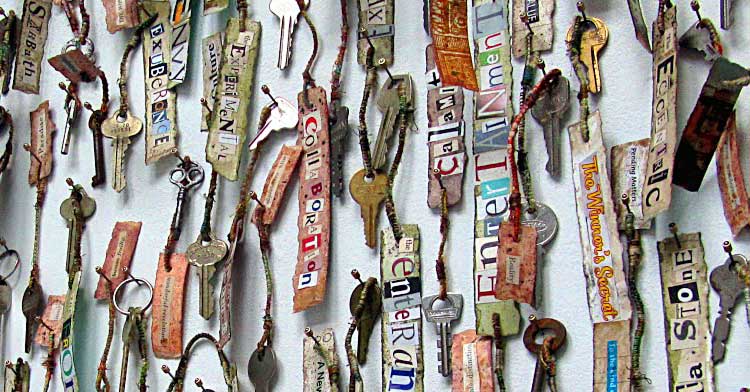
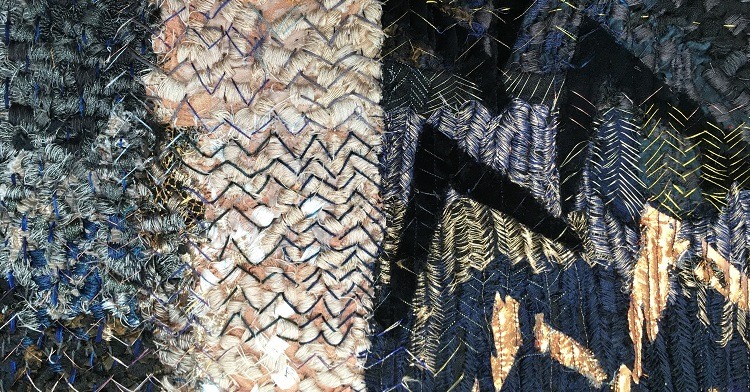
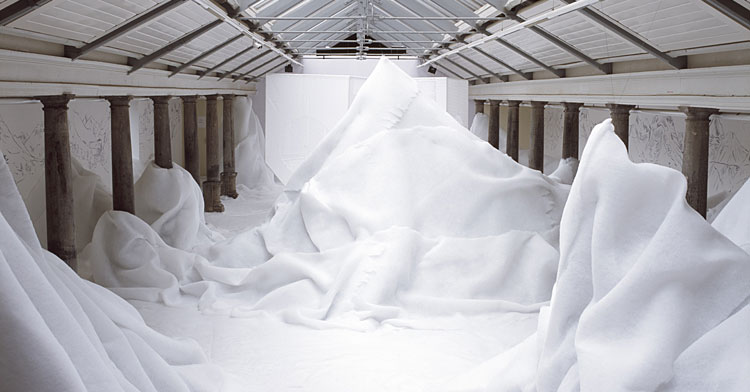
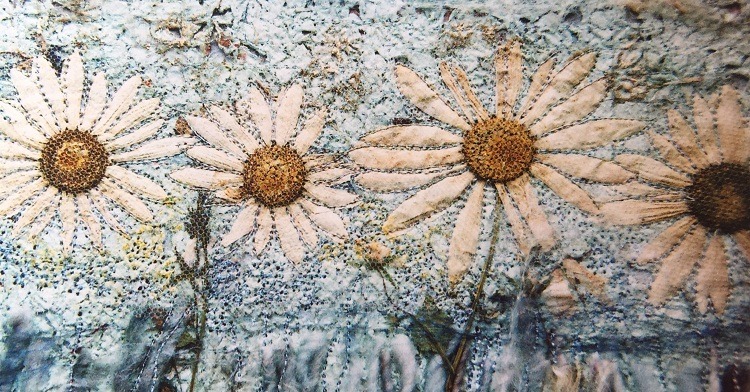
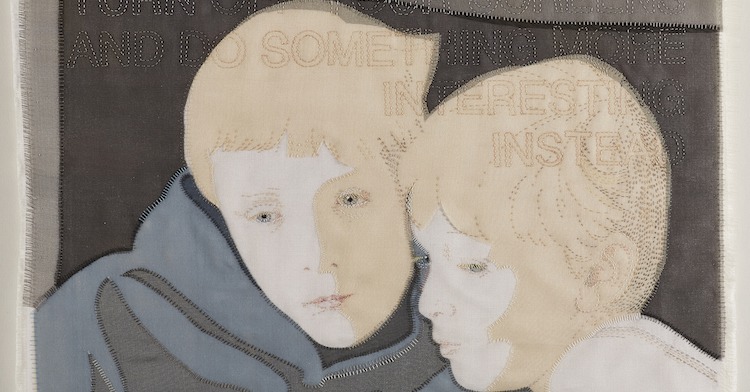
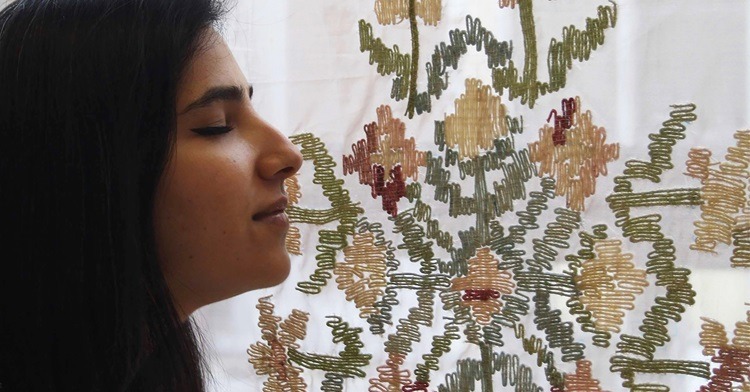
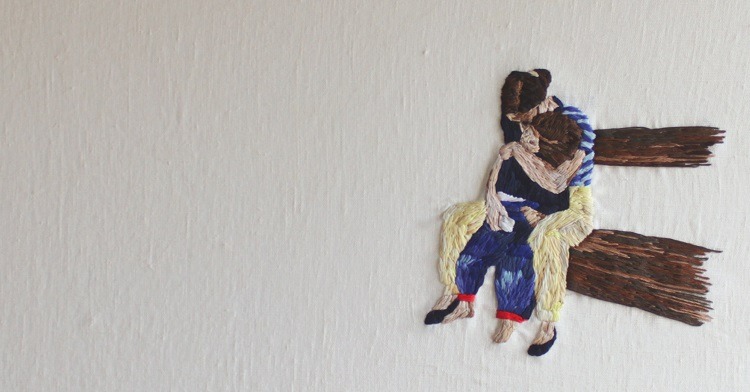
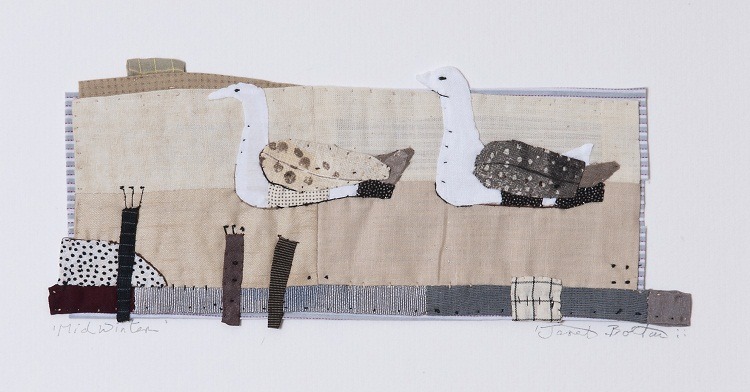
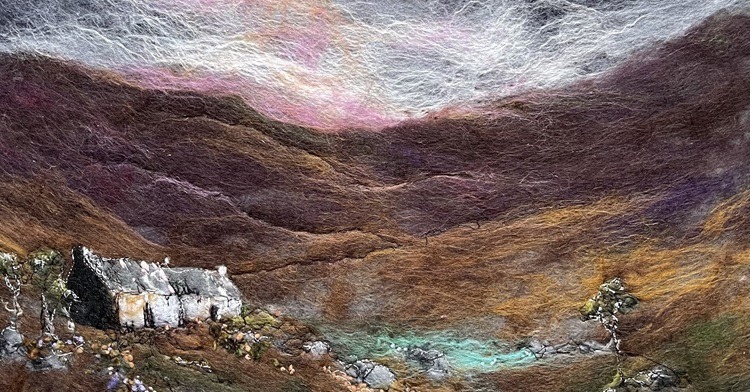
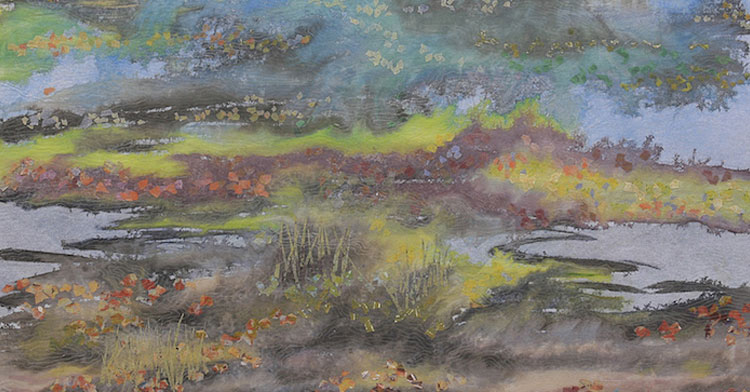
1 comment